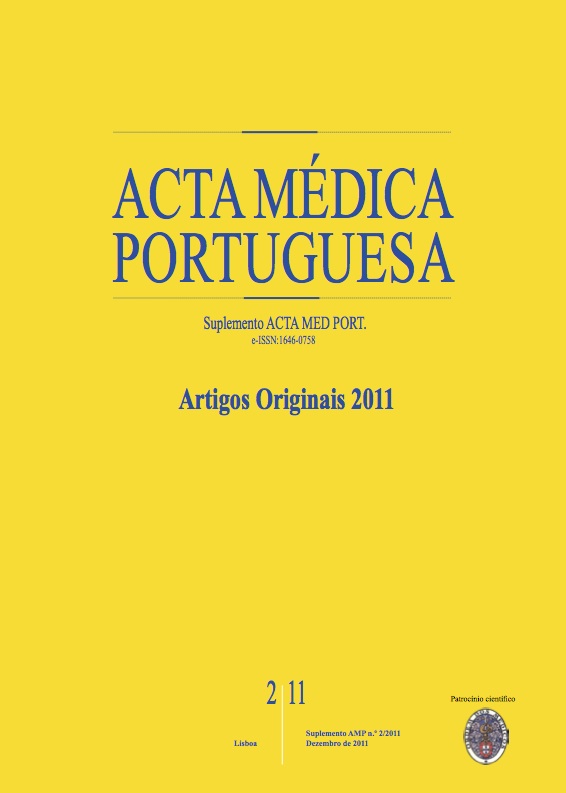Epidemiology of perinatal depression in Portugal: categorical and dimensional approach.
DOI:
https://doi.org/10.20344/amp.1450Resumo
The aim of the present study was to estimate depressive disorder and symptomatology prevalence and incidence in perinatal period in a population-based sample. Three-hundred and eighty six Portuguese women (mean age=30.08 years, SD=4.21) were interviewed with the Diagnostic Interview for Genetic Studies and completed Beck Depression Inventory-II/BDI-II and Postpartum Depression Screening Scale/PDSS, in pregnancy and postpartum. OPCRIT polydiagnostic system generated ICD-10 and DSM-IV diagnoses. One-month prevalence in pregnancy was of 2.3%/ICD-10 and 1.3%/DSM-IV; in postpartum it was of 16.6% and 11.7%. Pregnancy incidence was of 0%/ICD-10 and .3%/DSM-IV and in postpartum of 7.5%/ ICD-10 and 4.9%/DSM-IV. Depression pregnancy point-prevalence found with BDI-II cutoffs ranged from 13.7% to 19.4% in pregnancy and from .8% to 13.0% in postpartum and with PDSS from 14.2% to 17.9% in pregnancy and from 3.9% to 12.7% in postpartum. In the same sample, different diagnostic systems generated different prevalence and incidence rates. Higher prevalence rates were found using self-reported questionnaires. ICD-10 generated higher prevalence and incidence rates than DSM-IV.Downloads
Downloads
Como Citar
Edição
Secção
Licença
Todos os artigos publicados na AMP são de acesso aberto e cumprem os requisitos das agências de financiamento ou instituições académicas. Relativamente à utilização por terceiros a AMP rege-se pelos termos da licença Creative Commons ‘Atribuição – Uso Não-Comercial – (CC-BY-NC)’.
É da responsabilidade do autor obter permissão para reproduzir figuras, tabelas, etc., de outras publicações. Após a aceitação de um artigo, os autores serão convidados a preencher uma “Declaração de Responsabilidade Autoral e Partilha de Direitos de Autor “(http://www.actamedicaportuguesa.com/info/AMP-NormasPublicacao.pdf) e a “Declaração de Potenciais Conflitos de Interesse” (http://www.icmje.org/conflicts-of-interest) do ICMJE. Será enviado um e-mail ao autor correspondente, confirmando a receção do manuscrito.
Após a publicação, os autores ficam autorizados a disponibilizar os seus artigos em repositórios das suas instituições de origem, desde que mencionem sempre onde foram publicados e de acordo com a licença Creative Commons









